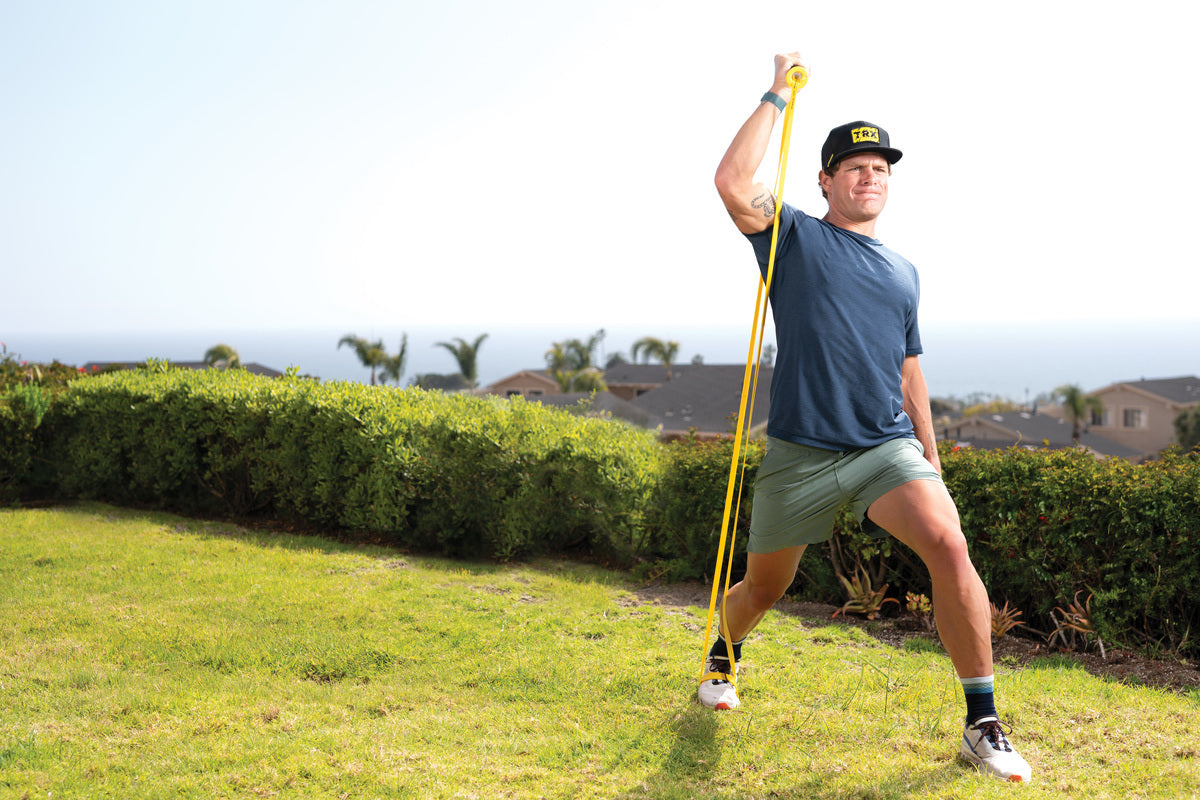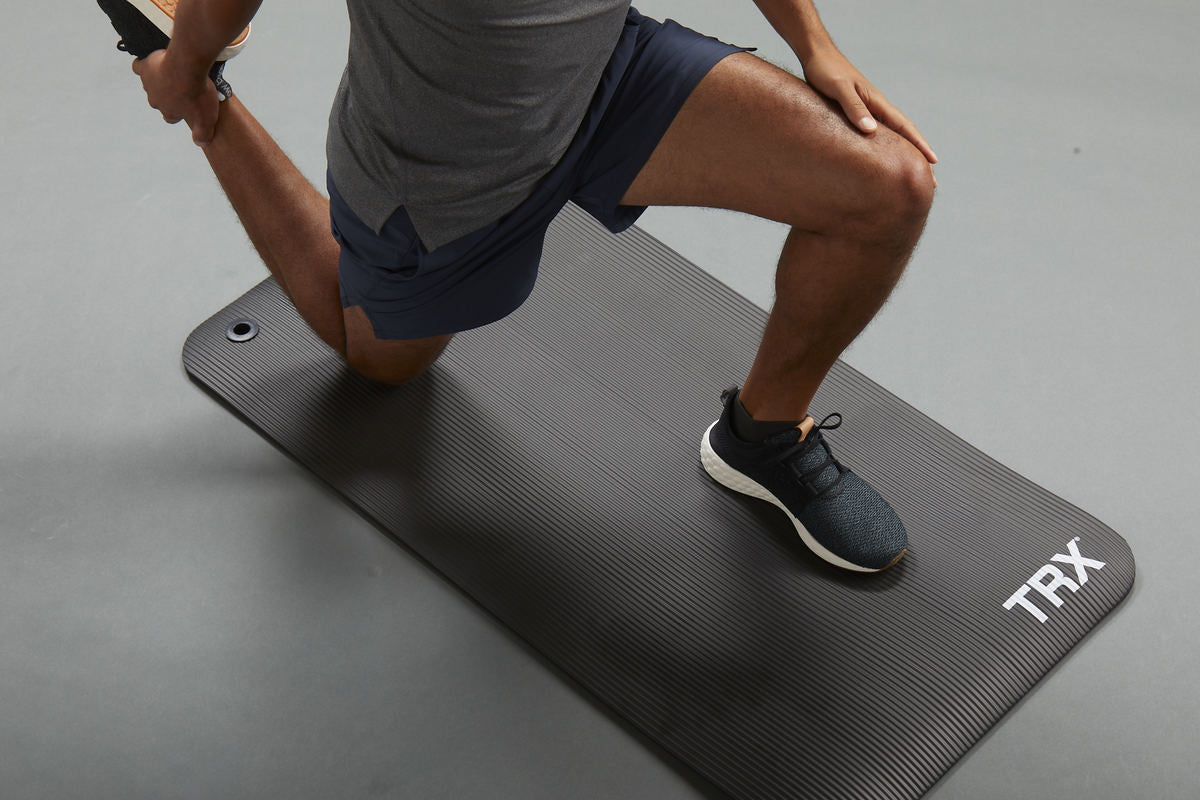Ready to build your body without worrying about the risk of an injury? TRX suspension training does more than just replace gym equipment—it challenges your body in ways machines can’t. First, it targets new muscle groups, engaging stabilizers and deep core muscles that machines often miss. Second, it reduces stress on your joints—since you control the resistance with your body weight, there’s less strain than with heavy weights. And finally, TRX keeps you moving for life, improving balance, flexibility, and strength in a way that supports long-term mobility.
No machines, no problem—just grab a TRX and get started. Looking for inspiration? Here are four moves that you can do to get started!
TRX vs Traditional Gym Equipment
Below, we’re highlighting four exercises you typically do with a gym machine that you can do today with your own TRX suspension trainer!
1. TRX Hip Press vs. Hip Thrusts with Barbell

With the TRX Hip Press, your hamstrings and glutes work to stabilize your body as your feet are suspended—something you don’t get with a barbell hip thrust. This added instability fires up more muscle fibers, improves balance, and helps prevent dominant muscles from taking over. Plus, no barbell digging into your hips—just smooth, controlled movement with your body weight. It’s a perfect example of how you can perform familiar gym moves on a TRX suspension trainer while adding a new challenge to your workout.
2. TRX Pull-up vs. Pull-up Machine

Unlike a pull-up machine that locks you into a set motion, TRX lets you adjust resistance by changing your body angle. That means beginners can build strength gradually, while advanced athletes can tweak their grip mid-set to challenge different muscles. There are no weight stacks, no rigid mechanics—just complete control over your progress. Whether you're debating joining a gym or working out at home, TRX gives you the versatility to train effectively wherever you are.
3. TRX Chest Fly vs. Chest Fly with Cables

TRX takes the chest fly to the next level by requiring full-body engagement. Instead of relying on a fixed cable path, your core, glutes, and stabilizers all fire up to keep you steady. This not only strengthens your chest but also improves coordination and functional strength. And because you control the resistance with your body angle, you get a natural range of motion with less strain on the shoulders. It’s one of the best bodyweight exercises to get a full-body workout at home, giving you gym-quality results without the need for heavy equipment.
4. TRX Wall Side vs. Overhead Press with Barbell

Pressing a barbell overhead builds strength but doesn’t challenge your rotational stability like the TRX Wall Side. This move forces your core and shoulders to control movement through multiple planes—perfect for real-life and athletic motions. Plus, without a heavy barbell compressing your spine, it’s a more joint-friendly way to develop pressing power and mobility. And if you’re looking to build arm strength without heavy weights, TRX also offers bodyweight exercises for biceps that engage stabilizers while reducing strain on your joints.
Related: Exercise Tutorial: TRX Chest Press
So, TRX or Gym Equipment?
When it comes to building strength, improving mobility, and protecting your joints, TRX wins hands down. Unlike traditional gym equipment, suspension training forces your body to work as one unit—engaging stabilizers, improving balance, and giving you more control over resistance and movement. There are no bulky machines, no heavy weights, just pure, functional strength that carries over into real life.
So, what’s stopping you? Ditch the machines, grab a TRX, come join us on the TRX App, and start training the way your body was meant to move!



